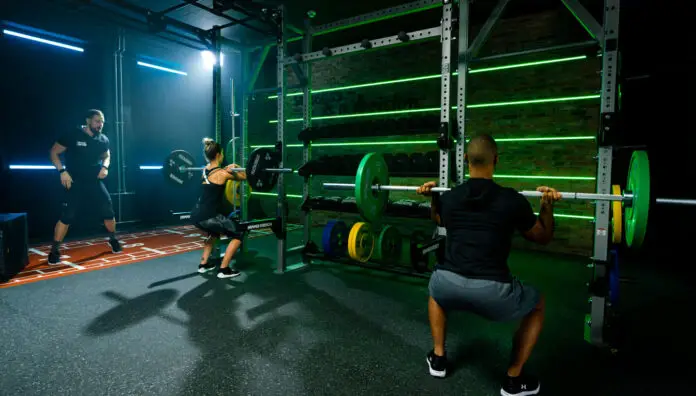As the fitness sector recovers from the setback of the pandemic and gyms return, group exercise is consolidating as a key element in the offer of fitness centers. Flexible use of space, a stimulating training environment and a well planned program will also be crucial for operators. In this latest article, we look at the benefits of small group training and the positive effect it has on your partners when done right.
If we interpret these figures and reflect on how we want the future of the sector to be, we can draw a series of conclusions:
- Operators should offer small group models focused on athletic and functional training
- Operators must implement a model based on health and performance in their facilities.
- Operators must continue to comply with all measures imposed by the coronavirus . At the same time, if new mobility or capacity restrictions arrive in the future, they must be able to adapt their offer and maintain the necessary safety distances between users of small groups.
FOCUS AND IDEA
For years, we have experienced the concerns of operators about the challenge of devoting a specific area to athletic and functional training in their facilities.
Often, the condition of the dumbbells or the plates was not the biggest influence on the attendance fee for a class. What discouraged members was doing classes in small groups encapsulated between the machines or in the most remote corner of the gym.
Poorly planned training programs that lack a system and structure are uncompetitive, preparation has been left out, and the names of the exercises do not clearly convey the principles and objectives.
From this, it is easy to deduce that having good teams without a comprehensive model and program to support it quickly loses its appeal.
As a result, functional training areas and racks are left abandoned.
To alleviate this, it is necessary to establish a training model in small groups that is well planned. The goal is to deliver good long-term results for operators, trainers, and partners, as well as enhance trainer skills, care for users, and build a sense of community within the small group. With and without anticovid measures.
WHAT INTERESTS PARTNERS
All visual and tactile stimuli arouse sensations, both positive and negative. Members can feel motivated or underserved depending on the environment in which they train, and also depending on how structured the zone is, what programs are offered, and what priority is given to training zones. All of this is important to them.
What factors should be taken into account when designing a small group training offer?
- Design, space and lighting
- Equipment and quality of accessories
- model and programming
A combination of the above elements will help centers to offer their members positive and stimulating experiences.
LOWER THE PSYCHOLOGICAL BARRIER AND INCREASE MOTIVATION
The psychological barrier has been around for as long as gyms have existed. Everyone knows: sometimes it’s hard to enter uncharted territory. Every center or coach should aim to pave the way for users, and there are two basic instruments to mitigate the fear they feel: communication and structure.
Both factors greatly reduce uncertainty, which lowers the level of reluctance.
Applied to a group exercise area, a clear structure would be like this:
- A defined training zone
- clearly identifiable stations
- Qualified technicians
- Training is carried out according to a systematic structure
In this way, both coaches and members benefit from a clear model. Although there is a lot of variety in the type of sessions, orientation and easy identification provide the necessary security for both parties.
In addition, clients learn more and more complex routines between programs, which they can put into practice in other rooms of the center. This makes them more competent and better understand the movement and the sport itself.
A good model includes all these elements and provides staff with the necessary tools to make their programs successful in the long term, as well as to strengthen the relationship between trainer and client.
Here are some of the tools that help build consistent programs over the long term:
- In-house or online training
- PDF Brochure (Trainer’s Guide)
- suggestive images
- video streams
- session plans
From this subjective perception, the value of the course increases for the participants.
To guarantee this quality, users must be offered exercises with different approaches, including progressions and regressions as an alternative.
By taking advantage of these opportunities, we will not only be improving the confidence and performance of our clients, but this synergy also influences the coaches. Through the preparation and practical and constant application of movements, routines and mobility exercises, the trainers also learn and can transfer this knowledge to other areas of the center.
With the closure of gyms due to the pandemic, we have been forced to evolve and adapt our training methods. However, regardless of where we train – at home or outside – we will still need to interact and connect with others, be it virtual trainers or friends at the park. And this is why group exercise will return stronger than ever in the post-pandemic era.




